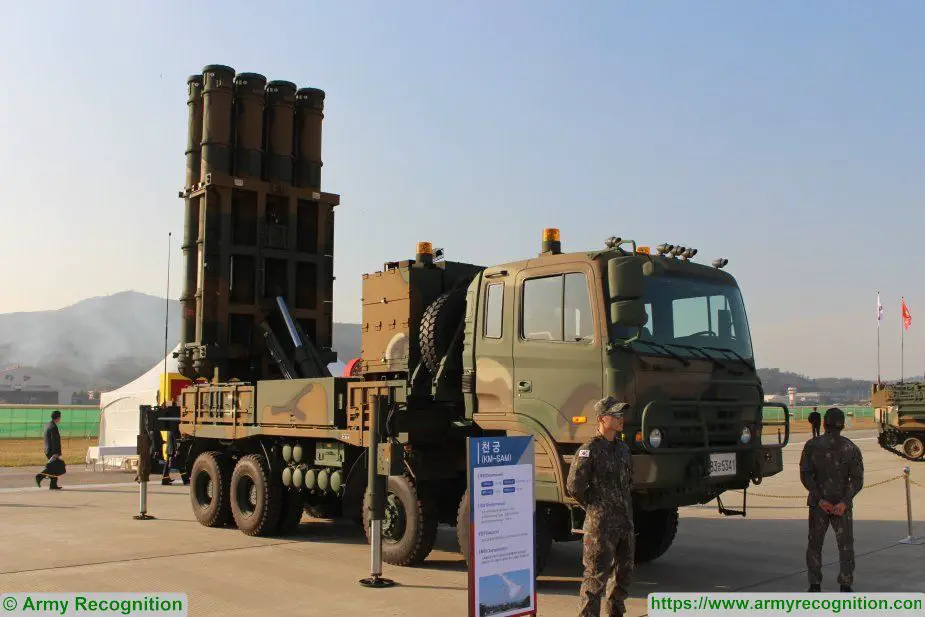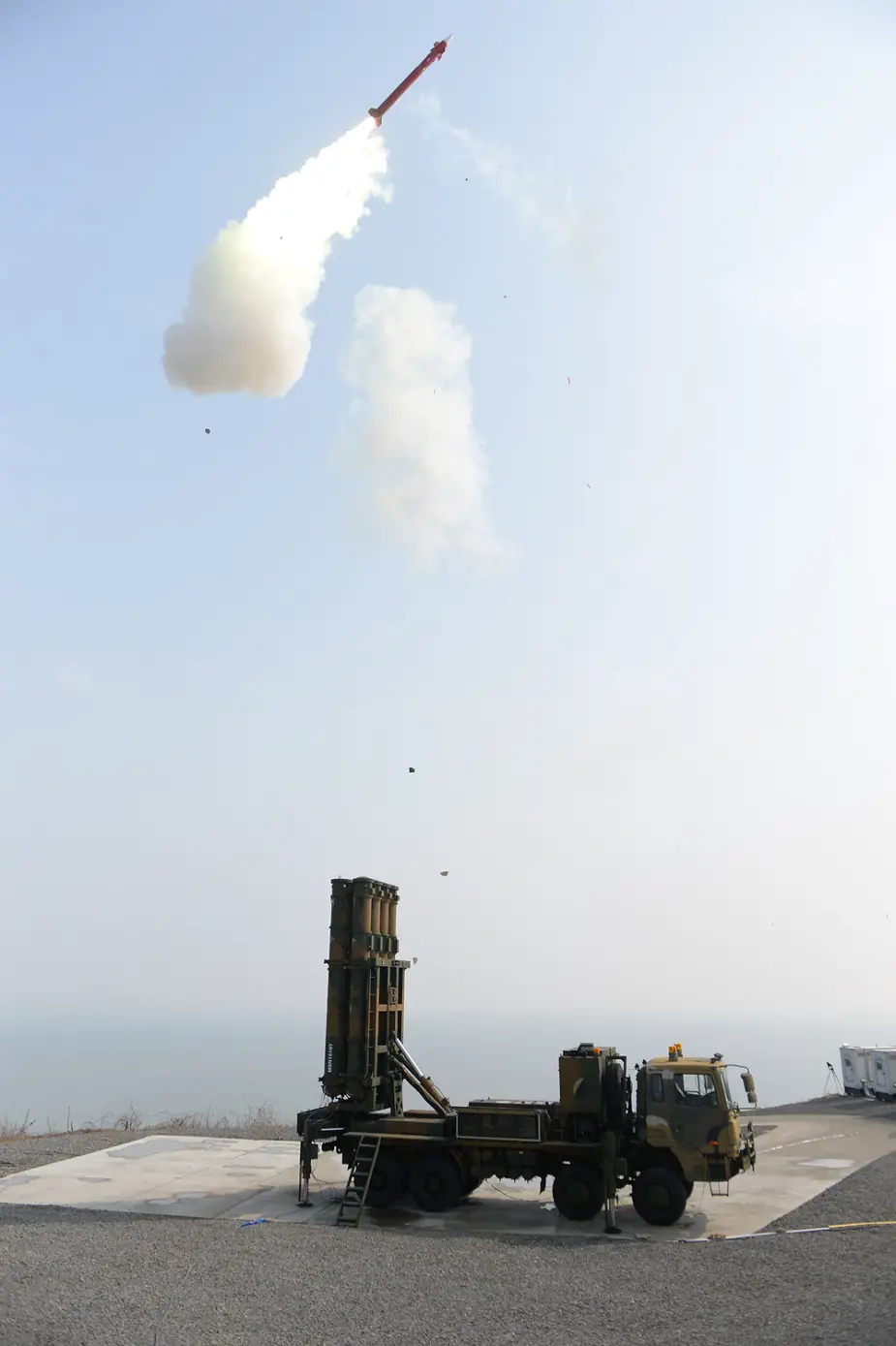During DX Korea 2018, the International Defense Exhibition currently held in Seoul, South Korea, Army Recognition learned that LIG Nex1 signed a mass production contract with the DAPA (Defense Acquisition Program Administration) for the KM-SAM (Cheolmae-2) medium range surface-to-air missile (SAM) system worth 499 billion won.

File picture: KM-SAM shown for the first time to the public during Seoul Air Show 2017
KM-SAM is a key weapon system of KAMD that forms a four-defense network with the THAAD, long-range surface-to-air missile (L-SAM). Development began in 2012 under the supervision of the Defense Science Research Institute (ADD), and 100% accuracy rate was achieved in a number of test launches, and it was judged to be suitable for battle in June. The mass production contract was signed on September 7, 2018.
According to LIG Nex1, KM-SAM is attracting high interest in overseas market due to its excellent operational performance, and it is expected to be exported on a large scale in the future. In addition, a large number of system makers such as LIG Nex1, Hanhwa System, Hanhwa Defense, Hyundai and Kia are participating in the mass production.

(Picture source LIG Nex1)
About KM-SAM
The missile with a 40-kilometer range, also called "Cheongung," was developed locally in 2011 to replace the ROK Air Force's (ROKAF) aging batteries of MIM-23 Hawk from the U.S. Each Cheongung battery consists of a multi-function radar, a firing control system, a launch pad, and eight missiles, according to Lee Hee-chul of the ADD. The multi-function radar is capable of detecting and tracing incoming enemy aircraft, identifying friend or foe, and guiding missiles. It can intercept up to six aircraft simultaneously, whereas the Hawk can intercept only one at a time. The Cheongung has a range of up to about 40 km and is aimed at intercepting aircraft flying at an altitude between 10-15 km. It will replace the American-made Hawk, which has been the Air Force's main surface-to-air weapon since 1964.
The Cheongung has a vertical launching system. Once it is launched into air based on a piston system, the missile's rocket motor ignites and the missile is guided by the radar. The missile can change direction quickly and has little chance of being detected by the enemy because it gives off little flare. Equipped with anti-electronic warfare capabilities, the missile system can keep functioning despite electronic jamming maneuvers. The ADD plans to further develop the Cheongung as a PAC-3-level ballistic interceptor missile. It will have to increase the Cheongung's altitude to 30 km and its range to 100-150 km.














